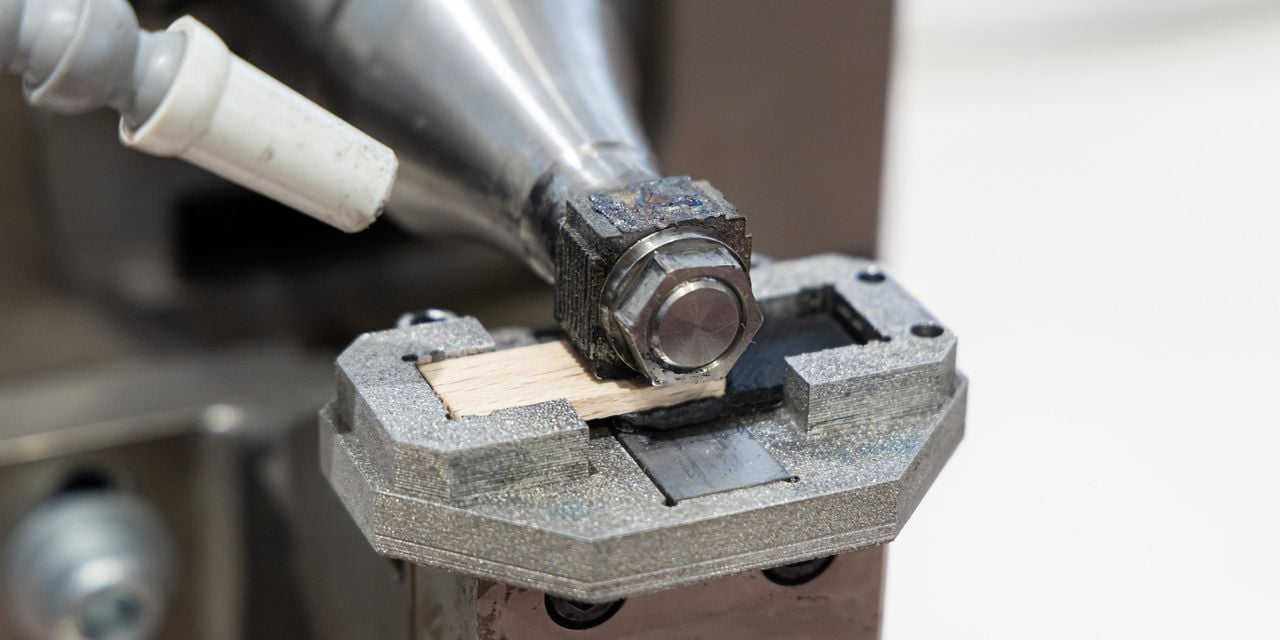
Ultrasonic joining and AddJoining processes affix materials directly onto wood surfaces.
Wood is renewable, climate-neutral, light and strong, making it attractive for use in vehicle manufacturing. However, it’s challenging to join wood durably with other materials, such as metals and polymer composites. Fortunately, a research team from the Institute of Materials Science, Joining and Forming of Graz University of Technology (TU Graz) has now successfully tested two techniques by which extremely strong joints can be achieved without using adhesives or screws. The application of the techniques to wood is patent pending and could be used in the aircraft, automotive and furniture industries.
One process, dubbed AddJoining, involves affixing a component made of polymer composite directly onto the wood surface using 3D printing. The printed material penetrates into the wood pores, where a chemical reaction occurs, similar to the reaction of glue with wood. According to the researchers, the resulting connections were highly successful in mechanical load tests.
“After the joint fractured, we were able to find polymer in the wood pores and broken wood fibers in the polymer, which suggests that the fracture occurred in the wood and polymer, but not at the joint,” explained Gean Marcatto in a press release. Marcatto is a postdoc at the institute. The tests were carried out on an untreated wood surface. Test materials included beech, oak, carbon fibre-reinforced polyamide and polyphenylene sulphide, stainless steel 316L and Ti-64 alloys.
According to the researchers, even more durable joints could be achieved by introducing a micro- or nano-structure into the wood through laser texturing or etching, which increases the pores and enhances the bonding surfaces. “But we wanted to work with as few steps as possible and, above all, without chemicals,” explained lead researcher Sergio Amancio. “We can use this technology particularly well with complicated 3D geometries because the components are printed directly onto the surface – in whatever geometry is required.”
The other process, ultrasonic joining, uses high-frequency vibration with low amplitude applied to the wooden component via a sonotrode. In contact with the base component – in this case, polymer or a polymer composite material – the friction generates heat at the interface, which melts the surface of the polymer part. The molten polymer then infiltrates into the naturally porous surface of the wood. In this way, a very stable spot joint can be achieved, from a mixture of mechanical interlocking (because the melted plastic solidifies again in the wood) and adhesion forces.
Read the rest of this story at ENGINEERING.com
